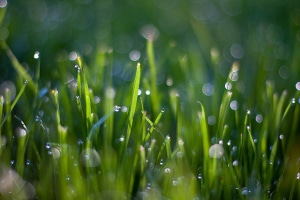
Region-wide watering regulations are here to stay with population growth burgeoning throughout Metro Vancouver centers and the impact of climate change. This has many homeowners questioning if their beautiful green lawn is still a sound investment?
Here at Western Turf Farms, we think it is. Lawns are much more than just an aesthetic asset. People often forget that lawns are dense plantings of plants, providing all the same benefits as the trees, shrubs and perennials inhabiting our gardens.

Over the last few years universities across North America have taken a close look at the effects of installing lawns in urban environments and have consistently shown that a healthy lawn provides urban and suburban dwellers with a myriad of benefits. Lawns are constantly at work:
As appealing as an artificial turf or a low-maintenance rock garden may sound to save water consumption, the downside of reducing grassed areas or letting grassed areas go dormant, especially in high density urban areas in the heat of summer, is often under-estimated.
While there are always exceptions to the rule, the majority of lawns require no more than one inch of rainfall or irrigation each week. More than that, and you may be reducing your lawn’s ability to tolerate and bounce back from summer’s inevitable stressful conditions.
With drought-tolerant grass varieties on the market, homeowners can decrease water use by 30 to 50 per cent than conventional lawn grass and maintain a green lawn with the right care. At Western Turf Farms, our drought resistant sod grass is specially blended and grown to need the least amount of irrigation.

Kentucky Bluegrass Drought Resistant Grass Sod Blend. Drought-resistant and tough enough to handle tougher micro climates while looking lush and green all year.
Fescue Drought Resistant Grass Sod Blend. Low maintenance, less irrigation needed. This drought-resistant blend can thrive even under some of the most dry and arid conditions in BC and Alberta. Fescue is also a good choice for shaded areas.

Like most plants, grasses rely on extensive root systems to pull up water from the surrounding soil. When lawns are watered often, grasses develop a very shallow root system.
Source: Metro Vancouver
The trick to promoting deep-rooted and resilient turf is to water deeply and infrequently. Ideally, you should be providing your lawn with about 1 inch of water or rainfall each week, preferably all at once. This practice results in water seeping into the top 6 inches or so of the soil, encouraging grass roots to delve deeper to locate available moisture the soil surface dries during the week.
How much water can we save by using Low-Water Sod?
Your average home lawn needs watering 3 to 4 times a week (though if your landscaper has put in pure sand as topsoil, that number goes up – organic soil with compost tends to absorb more water). With Low-Water Sod, you can reduce that to just once a week thereby reducing your water use by up to 75 percent!
Shouldn’t I water it more than once a week, just in case?
Absolutely not. This Low-Water Sod only needs a much smaller intake of water per week. Overwatering your lawn can actually ruin it, leaving it susceptible to disease, fungus and pests.
How do I know my grass is under stress?
If your lawn is getting thirsty, the first sign is that the grass starts turning darker (dark-green to black). When you step on it, it doesn’t ‘bounce back’ very fast.
What’s the price difference between low-water sod and the most popular sod you sell?
It’s virtually the same price, with a premium of just 15 to 20 cents a yard difference. You’re getting a quality, low-maintenance lawn for just a fraction of the total value.
How do I know if I live in an area that needs low-water sod?
As rainy as the west coast is, it’s sometimes hard to visualize the stark difference in the BC interior, which is much more arid. That said, there are even parts of the Lower Mainland where drier micro-climates can take hold. We recommend that you check out your local municipal bylaws for advice on local climate conditions.
What low-water sod varieties do you sell?
Our Kentucky Bluegrass sod has excellent drought resistance and is also noted for its lush green color. Our Fescue blend can thrive even in very dry conditions like the BC interior.
Once established fully, irrigation can be eliminated to allow a full summer dormancy during drought conditions with our Fescue Drought Resistant Grass Sod Blend or Kentucky Bluegrass Drought Resistant Grass Sod Blend.
Need help deciding which low-water sod product to buy or have questions about pricing or scheduling delivery? Contact us today at Western Turf Farms.
Order fresh sod now or request a custom quote for your project.
Save with a Yearly membership. Custom fertilizer program. Fertilizer, topsoil, seed delivered to your door before you need it. Don’t forget, we will remember for you!
Western Turf Farms Abbotsford
39183 No.5 Road Abbotsford, BC V3G 2G3
Western Turf Farms Langley
7880 240 Street Langley, BC V1M 3P9
© Copyright 2025, all rights reserved by Western Turf Farms. By using our website you agree to our Disclaimer and Privacy Policy.